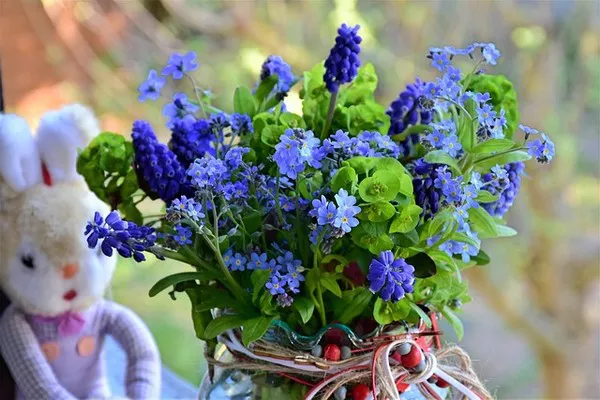Flowers have long served as messengers of human emotion, each bloom whispering tales of love, loss, and longing. Among the myriad of emotions they convey, longing stands out as a particularly poignant sentiment. In this article, we delve into the rich symbolism of flowers that evoke feelings of longing, exploring their cultural significance, historical context, and botanical allure.
Understanding Longing Through Floral Symbolism
Longing, an ache for something absent or distant, finds expression in various aspects of human experience. It transcends mere desire, encompassing elements of nostalgia, anticipation, and wistfulness. Flowers, with their ephemeral beauty and evocative fragrances, serve as potent symbols for this complex emotion.
Throughout history, poets, artists, and romantics alike have drawn inspiration from the language of flowers to articulate sentiments that words alone often fail to capture. From the ancient traditions of the East to the literary salons of the West, floral symbolism has woven a tapestry of meaning, with each blossom carrying its own unique message.
1. Roses: The Emblem of Unrequited Longing
No exploration of floral symbolism would be complete without an ode to the rose, perhaps the most iconic and multifaceted of all blooms. While commonly associated with love and passion, roses also bear the weight of longing, particularly in their white and yellow varieties.
The white rose, with its pristine petals and subtle fragrance, embodies a sense of purity and innocence tinged with longing. It speaks of unfulfilled desires, of dreams deferred and paths not taken. In literature and art, the white rose often appears as a symbol of unrequited love, its beauty a poignant reminder of what might have been.
Similarly, the yellow rose, with its warm hue and delicate blooms, carries undertones of longing and longing. Often associated with friendship and affection, the yellow rose also conveys a sense of yearning for connection, for the warmth of companionship in times of solitude.
2. Lilies: Elegance in Absence
In the language of flowers, lilies occupy a place of prominence, symbolizing purity, grace, and transcendence. Yet, beneath their serene exterior lies a deeper layer of meaning, one infused with the bittersweet essence of longing.
The calla lily, with its graceful curves and pristine white petals, exudes an air of elegance and refinement. In art and literature, it often represents the yearning for spiritual fulfillment, for a connection to something greater than oneself. Like a solitary beacon in the darkness, the calla lily beckons to the soul, inviting it to seek solace in the depths of longing.
The stargazer lily, with its vibrant hues and intoxicating fragrance, evokes a sense of longing for the stars themselves. It speaks of aspirations unfulfilled, of dreams that linger just beyond reach. In myth and folklore, the stargazer lily is often associated with the divine, serving as a symbol of hope and inspiration in times of uncertainty.
3. Forget-Me-Nots: Remembrance in Absence
In the language of flowers, forget-me-nots hold a special place as tokens of remembrance and fidelity. With their delicate blue petals and dainty clusters, these tiny blooms serve as poignant reminders of love and longing, even in the face of separation and loss.
Legend has it that the forget-me-not acquired its name from a medieval tale of romance and devotion. According to the story, a knight and his lady were strolling along the banks of a river when the knight spotted a cluster of blue flowers growing at the water’s edge. As he bent down to pluck them for his beloved, he was swept away by the current. Before he disappeared beneath the waves, he threw the flowers to his lady and cried out, “Forget me not!” From that day forth, the forget-me-not became a symbol of enduring love and longing, a token of remembrance for those separated by time and distance.
The Language of Flowers: A Universal Tongue
Across cultures and continents, the language of flowers has served as a universal tongue, speaking to the deepest recesses of the human heart. From the cherry blossoms of Japan to the lotus flowers of India, each bloom carries with it a message of longing, a testament to the enduring power of love and desire.
In Victorian England, the language of flowers reached its zenith, with elaborate floral arrangements serving as vehicles for clandestine messages between lovers and friends. Known as “floriography,” this secret language allowed individuals to express sentiments that society deemed inappropriate or taboo. In this coded language, even the simplest of blooms could convey profound emotions, from longing and desire to sorrow and regret.
Conclusion
In the tapestry of human experience, longing emerges as a thread that binds us all together, weaving its way through the fabric of time and memory. In the delicate petals of a rose or the fragrant embrace of a lily, we find echoes of our own desires, our own yearnings for connection and meaning.
As we wander through the garden of life, may we take solace in the beauty of flowers, in their timeless elegance and ephemeral grace. For in their silent language, we find comfort in the knowledge that we are not alone in our longing, that somewhere, across time and space, others too have felt the ache of an unfulfilled desire, the whisper of a dream deferred.
In the end, perhaps it is this shared experience of longing that truly binds us together, reminding us of our common humanity and the eternal quest for love and belonging. And so, as we gaze upon the petals of a flower, may we be reminded of the fragility of life, the fleeting nature of beauty, and the enduring power of longing to transcend the boundaries of time and space.


